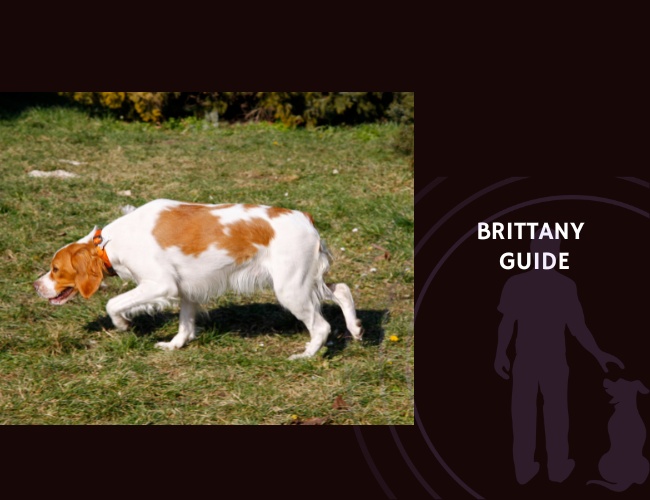Introduction to the Brittany Spaniel
Overview of Brittany’s origin and heritage
The Brittany is a charismatic and energetic breed that hails from the Brittany region of France. Developed for bird hunting, this dog was bred to be an active companion in rugged landscapes. The breed’s origins stretch back to the 1800s, where hunters valued their keen scent and natural ability to point and retrieve. Over time, careful selection shaped the Brittany’s sharp instincts and agile frame, making them a prize among field sports enthusiasts.
Key breed characteristics and recognition
Brittanys are medium-sized dogs with a compact, athletic build and distinctive, bright coats often in orange and white or liver and white patterns. Their expressive eyes and alert expression reveal both intelligence and eagerness. The American Kennel Club (AKC) recognizes the Brittany as an official sporting breed, noted for its agility, quick reflexes, and keen sense of smell. Their moderate size makes them adaptable to a variety of living spaces, from rural homes with lots of land to more confined suburban yards.
Why the Brittany became a popular sporting and family dog
What sets the Brittany apart is its versatility. This breed is renowned for excelling in sporting activities, especially upland game hunting. Their enthusiastic field drive pairs with an affectionate, people-oriented nature. Brittanys thrive on human interaction and develop strong bonds with their families. Their playful demeanor and sensitivity make them a hit with children and adults alike. The Brittany’s capacity for learning and willingness to please also means they adapt well to both active households and families seeking a loyal, supportive companion.
With their blend of athleticism and gentle personality, Brittanys have found a special place in homes and hearts worldwide, making them a favorite among those who value both companionship and adventure. As we continue, we will discover how these traits shape their character and what makes them stand out among other breeds.
Character and Temperament
Field drive and hunting motivation
The Brittany is famous for its drive and enthusiasm in the field. This breed’s origins as a gun dog shine through its natural urge to seek, point, and retrieve. Observational studies show Brittanys excel in controlled hunting simulations, where they display keen scent-tracking, strong stamina, and focused pointing abilities. Data from field tests measure their distance covered, time spent tracking, and prey identification accuracy. These traits make Brittanys reliable partners for hunters and great participants in canine sports.
Emotional sensitivity and human bonding
Brittanys are notable for their emotional intelligence and tight bonds with their families. They’re quick to notice changes in human tone or facial expression, responding with enthusiasm or gentle affection. Research indicates Brittanys have measurable physiological responses—such as changes in heart rate or cortisol levels—when interacting with people, showing empathy or excitement. These dogs thrive on close companionship, often seeking human contact and showing signs of stress or loneliness if left alone for long stretches.
Energy regulation and behavioral outlets
This breed’s high energy level is both a blessing and a management challenge. Brittanys are happiest when given lots of chances to run, play, and mentally engage. Activity trackers show they cover significant ground each day, requiring structured outlets like fetch, agility, or scent games to maintain healthy behavior. Without enough stimulation, they may become restless or bored, sometimes turning to unwanted behaviors. Consistent exercise and enrichment activities help regulate their energy and improve overall well-being.
With their unique mix of drive, sensitivity, and lively spirit, Brittanys bring enthusiasm to every household or hunting field. Their adaptability and positive temperament set the stage for understanding how they interact with other pets and respond to different environments.
Social behavior
Inter-dog dynamics and pack behavior
Brittany Spaniels are naturally sociable dogs that often enjoy the company of other dogs. Observational studies in multi-dog households show that Brittanys engage in a mix of playful and cooperative behaviors, especially during group activities like play or resource sharing. They rarely display outright aggression, though mild resource guarding (protecting food or toys) can happen when excitement runs high. Most Brittanys prefer to resolve outfit conflicts with playful gestures or submissive postures rather than dominance. This friendly approach makes them a good fit in homes with multiple pets, as long as clear boundaries and positive routines are set early on.
Fear response and environmental reactivity patterns
Brittanys are emotionally sensitive and can display distinct responses to unfamiliar or stressful environments. When exposed to unexpected stimuli, such as loud noises or strange objects, Brittanys may show mild reactivity like freezing, hiding, or barking. Studies measuring heart rate and behavioral reactions found that these dogs can be startled more easily compared to less sensitive breeds, but they also recover quickly if comforted by their people. Their need for reassurance means they thrive when owners provide encouragement in new situations and avoid harsh corrections, supporting a confident and positive outlook.
Adaptability to different household environments
One of the Brittany’s strengths is their remarkable adaptability. They adjust well whether living in busy family homes, peaceful rural settings, or more dynamic city spaces. Research shows that Brittanys quickly learn household routines and handle change with curiosity when they feel secure. However, they do require a stable environment where their high energy and need for social interaction are met. Providing regular exercise, mental stimulation, and affection ensures that they settle smoothly into most home situations, making them versatile companions for a range of lifestyles.
Balanced social behavior is key to the well-being of Brittany Spaniels, helping them remain happy and confident companions.
Training Fundamentals
Building focus and handling distractions
Brittanys are known for their lively and curious personalities. This makes them wonderful learners but also means their focus can shift quickly, especially in new or exciting environments. In outdoor training, Brittanys respond well when sessions are built around short, clear commands and frequent rewards. Controlled training sessions have shown that their ability to listen and return (recall) can be quite reliable when distractions are managed carefully. However, recall reliability may drop when birds, scents, or other animals are nearby. By slowly increasing distractions and keeping sessions positive, you help build a Brittany’s focus over time.
Reinforcement methods and sensory preferences
Learning comes easiest to Brittanys when their senses are fully engaged. Training that uses food rewards, verbal praise, or even unique scents as motivators has been tested. Most Brittanys show faster learning and better accuracy when food or scent-based rewards are used, compared to just verbal praise. Handlers can also observe how their Brittany responds—some may work harder for a favorite treat, while others are motivated by a favorite toy or enthusiastic praise. Tailoring the reward to the dog’s preference keeps training both informative and fun.
Positive vs. negative reinforcement
The effectiveness of positive reinforcement is especially pronounced in Brittanys. When rewarded for good behaviors, they learn quickly and are eager to repeat the correct actions. Negative reinforcement, such as corrections, tends to slow learning and may create stress, as Brittanys are quite sensitive. Training that emphasizes rewards and gentle guidance results in a confident, happy dog that trusts its owner. This approach not only enhances recall and focus but also builds a stronger, more supportive partnership between dog and human.
With these supportive strategies, trainers lay a solid foundation for Brittanys’ learning journeys. This is a key step before moving on to more challenging training skills.

Advanced Training Techniques
Cognitive mapping and spatial memory
Brittany Spaniels shine when it comes to learning landscapes and remembering new environments. Cognitive mapping is an important skill for these intelligent dogs, especially during fieldwork or hunting. Controlled studies with GPS tracking have shown that Brittanys excel in efficiently navigating novel terrain and reliably returning to their starting point. What stands out is their ability to create strong mental maps. This means they can cover long distances but still recall the most direct path back, which is practical for outdoor activities with their owners. Training games that involve scent trails or treasure hunts help sharpen this ability, providing both enrichment and practical skills for real-world tasks. Encouraging your Brittany to solve these challenges supports their natural instincts and builds confidence in new settings.
Balancing dual roles
Brittany Spaniels are true multi-taskers. They can shift from working dog to family companion, depending on their handler’s cues. Observational research reveals that successful dual-role training depends on clear communication and consistent routines. For instance, when a Brittany transitions between hunting tasks and relaxed family moments, it’s helpful to use separate gear or specific verbal cues for each context. This minimizes confusion and stress, creating a sense of security for the dog. A Brittany will thrive when the expectations for each role are kept clear, and when down-time is as valued as work time.
Preparing for field trials
When training for field trials, Brittanys benefit from targeted exercises that build endurance, accuracy, and focus. Short, focused training sessions work best since these dogs respond well to positive reinforcement and can become stressed by too much correction. Practice drills can include timed retrieves, scent targets, and navigating distraction-filled environments. Tracking performance—like measuring stamina and recall reliability—ensures steady progress and keeps motivation high. By combining cognitive challenges with practical fieldwork, owners support both the mental and physical growth of their Brittany Spaniels, helping them meet their fullest potential.
With these strategies, trainers and families can unlock new levels of skill and satisfaction in their Brittany’s active life.
Nutritional Requirements
Fueling an energetic lifestyle
Brittany Spaniels are full of life, whether they’re sprinting through a field or playing fetch in the backyard. Their athletic build means they have a higher metabolic output compared to less active breeds. Energy needs will rise significantly for Brittanys involved in regular fieldwork or intense agility sports. Owners should carefully match their Brittany’s caloric intake to the dog’s exercise level to maintain a healthy weight and support muscle repair. Generally, a balanced diet with elevated protein (20-30%) and moderate fat (10-15%) keeps these dogs strong and energetic.
Nutrient timing and performance boost
When it comes to optimal performance, not only what you feed, but when you feed matters. For active Brittanys, providing easily digestible carbohydrates and high-quality protein a couple of hours before extended activities helps maintain steady energy. Offering a moderate meal after activity helps with rapid muscle recovery and restocks glycogen reserves. Supplementing the diet with omega-3 fatty acids is recommended to support brain health, while joint-protective ingredients like glucosamine are helpful for these athletic dogs.
Hydration matters for peak activity
Active Brittanys lose water quickly, especially during hunting, training, or play in warm weather. Dehydration can set in fast, so providing constant access to clean water is vital. For dogs in heavy work, consider electrolyte-rich hydration supplements to replace minerals lost in sweat. Always monitor your Brittany’s hydration by checking for bright, moist gums and good skin elasticity. Spotting signs of dehydration early helps prevent overheating and supports overall health.
Proper nutrition and hydration are essential in helping your Brittany stay healthy and ready for any adventure. Implementing these guidelines will set the stage for managing more specialized dietary needs and long-term digestive health.
Agile. Affectionate. Unstoppable.
Field-Bred Heart. The Brittany moves with purpose—quick on its feet, sharp in its mind, and always attuned to your next step. Born of wind, brush, and instinct, this bird dog lives to connect, chase, and conquer the open field with grace.
Sensitive Soul, Boundless Drive.
Brittanys are emotionally rich dogs with a pulse that matches yours. Their devotion is not loud but steady—felt in quiet glances, eager eyes, and the way they never want to be far. Behind their enthusiasm is a soul wired for harmony and play.



More Than a Hunting Dog.
They may be built for the uplands, but they settle just as well into the center of a family. With the right balance of stimulation, affection, and structure, a Brittany is not just a companion—they’re an every-day, everywhere part of your world.
Diet and Digestive Health
Gut health and food sensitivities
A healthy digestive system is important for the Brittany, supporting their energy and overall wellbeing. Brittany Spaniels can be prone to food sensitivities, so keeping an eye on stool consistency and digestive comfort is helpful. Owners might notice occasional signs of an upset stomach—such as loose stools or picky eating—often linked to changes in diet or exposure to certain ingredients.
Fecal analysis in Brittanys indicates the value of monitoring microbiota diversity in their gut. A diet that encourages a balanced and diverse gut flora can prevent digestive upsets and boost immune function. When sensitivities are suspected, a slow transition to new foods or an elimination diet can make a big difference. If any signs of digestive instability persist, such as recurring diarrhea or vomiting, it’s best to work with your vet on tailored solutions.
The role of antioxidants and neuromuscular recovery
After exercise, Brittanys benefit from diets rich in antioxidants. These nutrients—often found in blueberries, spinach, and carrots—help fight oxidative stress and reduce inflammation following strenuous activity. Observational research shows that antioxidants can support muscle recovery and help Brittanys maintain their high activity levels.
Adding ingredients high in vitamins C and E, as well as omega-3-rich fish oil, can further promote neuromuscular health and aid in recovery after long days in the field or active play.
Adjusting diet for activity and age
As Brittanys progress from playful pups to active adults, and eventually to senior years, their dietary needs shift. Young, active dogs do best with somewhat higher protein and moderate fat to fuel muscle growth and activity. Older Brittanys may need a little less fat and calorie content to prevent weight gain, while joint-friendly supplements like glucosamine can help keep them moving comfortably.
Adapting food types and serving sizes according to your dog’s daily activity and age ensures optimal health at every stage, keeping both stomach and energy in balance.
With good dietary routines in place, Brittany Spaniels are set to thrive—whether at home or out on the trail.
Common Health Concerns
Hip dysplasia and orthopedic issues
Hip dysplasia is a prevalent health concern in Brittanys. This hereditary condition affects the development of the hip joint, which can lead to pain or mobility problems as dogs age. Screening with radiographs helps veterinarians and breeders identify affected dogs early. Responsible breeders often use genetic testing and only breed Brittanys with healthy hip scores to help lower the risk within the breed. Regular exercise, a lean body weight, and joint-supportive supplements can help manage symptoms, but each dog’s needs will vary.
Epilepsy and seizure management
Some Brittanys are prone to epilepsy and idiopathic seizures. These conditions can appear as sudden, uncontrolled movements or loss of awareness. Owners may need to keep detailed records of each event, noting the time, duration, and behavior before and after a seizure. In many cases, genetic analysis is conducted to assess heritability and inform treatment decisions. Veterinarians usually recommend medication or lifestyle adjustments, based on the severity and frequency of seizures, to improve the dog’s quality of life.
Endocrine disorders and hypothyroidism
Hypothyroidism is another common health issue for Brittanys. This disorder results from an underactive thyroid gland, causing symptoms like weight gain, lethargy, skin changes, or cold intolerance. Bloodwork and hormone testing help veterinarians diagnose this condition. Owners should watch for behavioral shifts or physical signs and seek prompt testing if anything seems off. Lifelong medication is often needed, and most Brittanys respond well with proper management.
Taking a proactive and informed approach helps ensure Brittanys remain healthy and happy companions as they mature. Regular veterinary visits, preventive care, and ongoing monitoring are essential to address health concerns early.

Preventative care
Ear care for floppy-eared breeds
Brittanys have soft, floppy ears, which can trap moisture and promote microbial growth. This makes them more likely to get ear infections compared to dogs with upright ears. Routine ear cleaning is very important. Use a gentle, dog-safe ear cleanser and cotton balls—but never insert anything deep into the ear canal. After swimming or field activities, dry the ears carefully to prevent moisture buildup. Regular visual checks help you spot early signs of redness, odor, or discharge. If you notice these signs, a quick trip to your veterinarian is the best step to keep infections from getting worse.
Defense against tick-borne illnesses
Active Brittanys often spend time outdoors where ticks live. This exposes them to diseases such as Lyme or ehrlichiosis. To lower the risk:
- Inspect your dog’s coat and skin after walks or play, especially after time in tall grass or woods.
- Use a veterinarian-recommended tick preventative all year round.
- Keep your yard tidy and mowed, and avoid areas known for heavy tick populations.
If you find a tick, remove it gently with fine-tipped tweezers, pulling straight out. Monitor your dog for symptoms like fever, lethargy, or swollen joints and contact your vet if anything unusual appears. Regular blood tests can also help catch any illness early.
Staying proactive with health screenings
Early detection is key for a healthy, active life. Brittanys benefit from yearly wellness exams. At these appointments, your vet will check for orthopedic issues, thyroid health, and other common concerns. Periodic blood panels, urinalysis, and checks for heartworm and parasites should be a routine part of your care plan. These screenings are vital for catching hidden problems and keeping your Brittany feeling their best.
Taking these simple and supportive steps means you and your Brittany can keep enjoying adventures and special moments together. 😊
Lifestyle Compatibility
Perfect fit for active owners
Brittany Spaniels are an ideal choice for individuals and families who love outdoor adventures and an energetic lifestyle. These dogs thrive when they can join you on hikes, jogs, or agility activities. Their natural stamina and eagerness to be part of the action mean they enjoy busy, stimulating households. Owners who appreciate daily walks, exploring new trails, or even practicing field sports will find the Brittany to be a supportive and enthusiastic companion.
Enrichment and mental stimulation
Beyond physical exercise, Brittanys require plenty of cognitive stimulation. Without enough mental challenges, they may show signs of boredom, such as restlessness or seeking attention in less desirable ways. Fun puzzle toys, scent work, and interactive training games help keep their clever minds active. Observational studies confirm that Brittanys engage deeply with enrichment, displaying impressive problem-solving abilities and sustained attention spans.
Engaging activities include:
- Hide-and-seek games indoors or in the yard
- Scent-based challenges using treats or toys
- Short, varied training sessions with positive reinforcement
- Rotate toys to introduce novelty and prevent boredom
Companionship needs and separation
Emotional sensitivity is a hallmark of the Brittany breed. They form deep bonds with their human companions and typically want to be involved in daily life. If left alone for extended periods, Brittanys may become anxious or show signs of distress, such as vocalizing or destructive behaviors. Studies report that frequent, prolonged absences can lead to increased separation anxiety compared to breeds with more independent temperaments. For this reason, Brittanys are best suited to households where someone is often present or where social interaction is prioritized.
With the right balance of activity, mental enrichment, and companionship, Brittany Spaniels truly shine as loving, loyal, and joyful additions to active homes.
Living With a Brittany
Exercise requirements and activity planning
Brittany Spaniels are full of energy and thrive when they have lots of physical and mental stimulation. To keep them happy and healthy, daily exercise is a must. Most Brittanys need at least 1-2 hours of activity every day. This can include walks, playtime in a yard, or fun games like fetch and scent work. Regular outings to parks or trails provide both exercise and chances to use their strong hunting instincts. Without enough activity, Brittanys may show signs of boredom, like barking or chewing.
Adaptability to structured routines and dynamic environments
Brittanys show strong adaptability, adjusting well to both structured routines and changing environments. They do best when they know what to expect each day, but they also handle surprises—such as travel or new visitors—reasonably well. Studies show Brittanys recover quickly from stress if offered reassurance and familiar cues. Building a steady routine of feeding, walks, and play helps them feel secure, while still keeping the schedule flexible for the occasional adventure or new experience. This flexibility makes them a fit for families with varied lifestyles, as long as daily needs are still met.
Aging process and quality of life in senior years
As Brittanys enter their senior years, typically after eight or nine years old, their exercise needs may change. Owners may notice lower energy levels or stiffness in joints. Gentle activities like shorter walks, light play, and interactive toys help older Brittanys stay balanced and comfortable. Observational studies have found that maintaining enrichment and social time is key to long-term quality of life. Regular vet check-ups and dietary adjustments support them as they age. Thoughtful attention can help Brittany Spaniels enjoy every stage of their lives, from energetic youth to their golden years.
Staying aware of your Brittany’s lifestyle and health is one of the most supportive things you can do, ensuring each day is rewarding and comfortable for your canine companion.
Conclusion: Is the Brittany Right for You?
Key considerations for future owners
Choosing a Brittany means welcoming a truly energetic and loyal companion into your life. This breed thrives in households that enjoy an active daily routine, as Brittanys require 1-2 hours of exercise and mental stimulation each day to stay healthy and content. If you enjoy hiking, running, or exploring the outdoors, the Brittany could be the perfect match.
Brittany Spaniels show high emotional sensitivity. They deeply bond with their families and may find it stressful to spend long hours alone. If you work from home or have a flexible schedule, you’ll be able to provide the affection and attention they need. They also adapt well to routines but are flexible enough to thrive in dynamic settings with proper support. Their playful nature makes them great family dogs, especially in homes where everyone enjoys interacting with their pet.
Setting realistic expectations
Life with a Brittany is both rewarding and demanding. Their high intelligence means they crave mental challenges—think scent work, puzzle toys, or agility courses. Boredom can lead to destructive behaviors, like chewing or excessive barking. Consistency in training and clear communication help them shine as both companions and athletes. Be ready for dietary needs that adjust with age and activity level, and stay attentive to preventative health care, like ear cleaning and routine vet visits.
These dogs excel when given a job, whether it’s hunting, participating in dog sports, or being an enthusiastic walking buddy. However, they are not well-suited for a sedentary lifestyle or families with little time for interaction.
Finding support and additional resources
Getting involved with breed clubs or online Brittany communities can offer helpful advice and camaraderie. Regular consultation with veterinarians familiar with the breed ensures you meet their health and nutritional needs. Training programs, both virtual and local, provide guidance for optimizing their learning and enrichment.
Being a Brittany owner means committing to their energetic, sensitive spirit—but the reward is a devoted and joyful companion that will enhance your active lifestyle.










